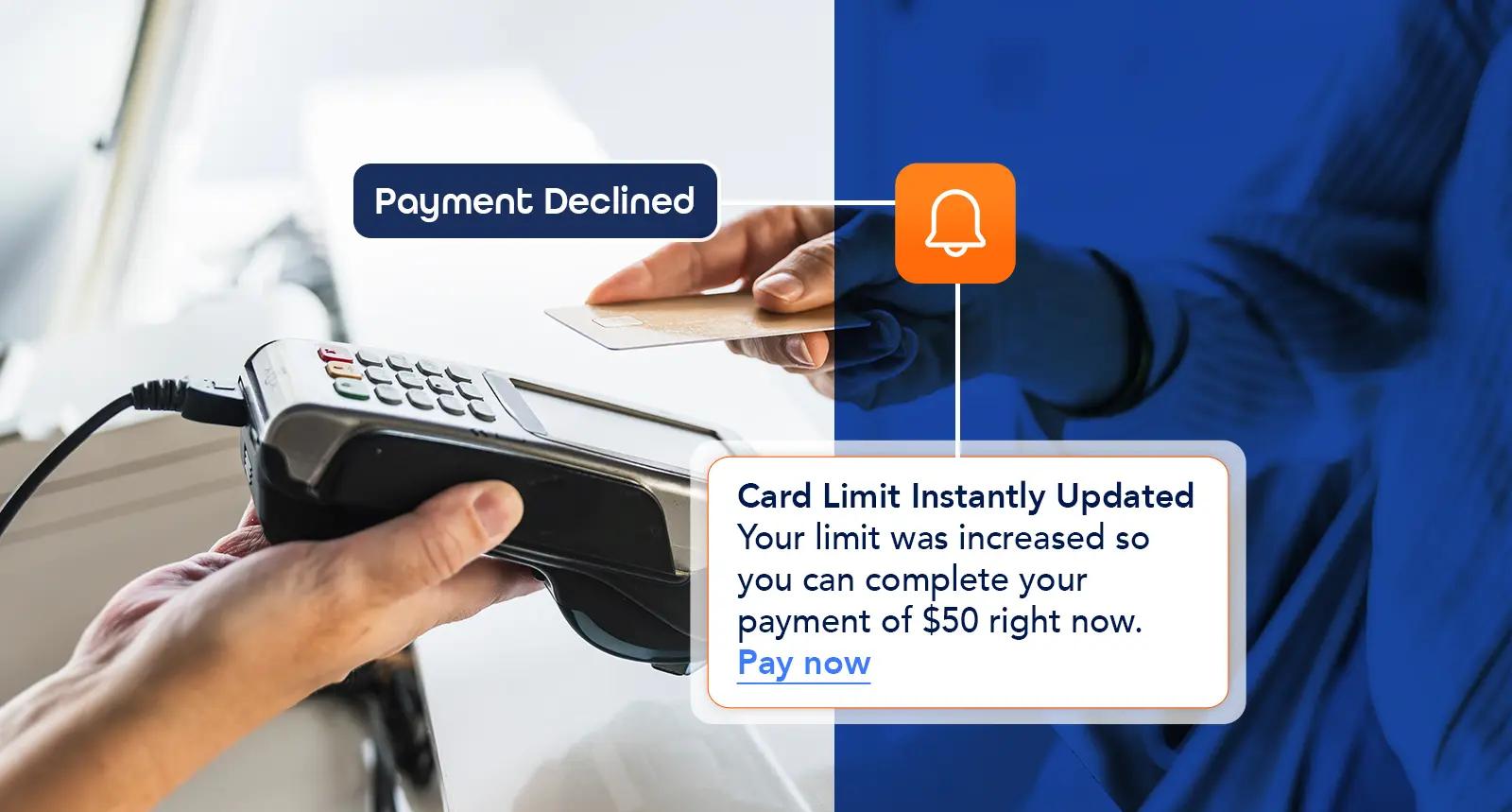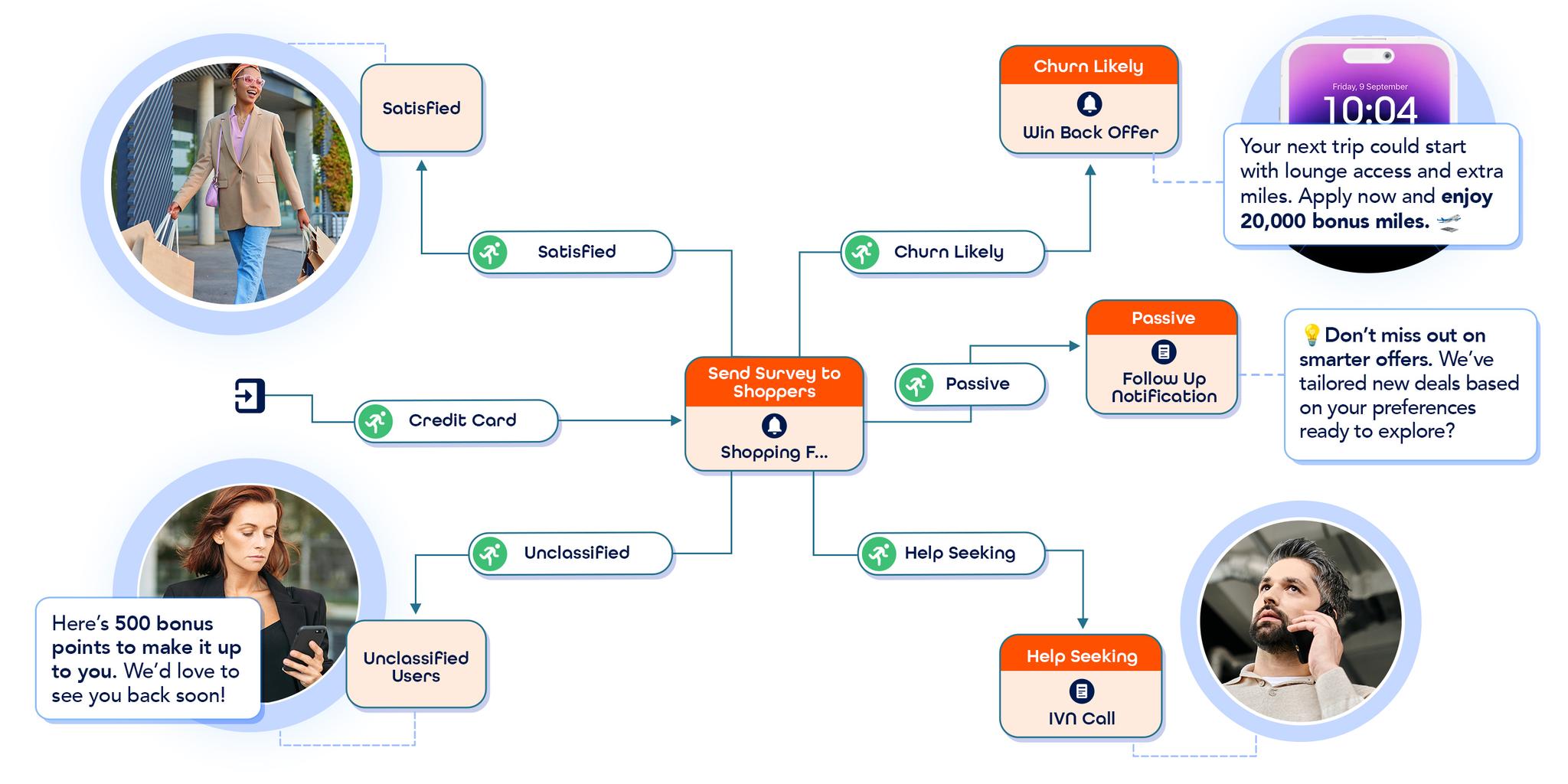- How to Build a Seamless Omnichannel Experience for Mobile App Users
- The Challenge: Fragmented Journeys & Mobile Disconnection
- The Pillars of a Mobile-First Omnichannel Experience
- 1. Unified Customer Profile
- 2. Channel Coordination
- 3. Personalization Across Every Touchpoint
- 4. Continuous Optimization
- Tech Stack Essentials for Mobile Omnichannel Experiences
- 1. Real-Time Customer Data Platform (CDP)
- 2. Mobile Engagement Software Development Kits (SDK)
- 3. Journey Orchestration Engine
- 4. AI & Machine Learning Capabilities
- 5. Open API & Ecosystem Integrations
- 6. Privacy & Consent Management Tools
- Common Pitfalls in Delivering Mobile Omnichannel Experiences
- 1. Siloed Teams
- 2. Outdated Data = Missed Moments
- 3. Notification Fatigue
- 4. Technical Integration Hurdles
- 5. Privacy Constraints
- evamX: Powering Seamless Mobile Journeys at Scale
In today’s always-connected world, mobile apps aren’t just another touchpoint, they're often the center of a customer’s brand experience. Whether it’s browsing products, completing transactions, or getting support, users expect every interaction to feel connected, contextual, and seamless.
However, mobile activity too often lives in a silo, disconnected from the broader customer journey across web, email, SMS, and beyond. In this post, we’ll explore how brands can build a truly seamless mobile app user experience with a winning omnichannel strategy powered by real-time customer data and AI-driven personalization.
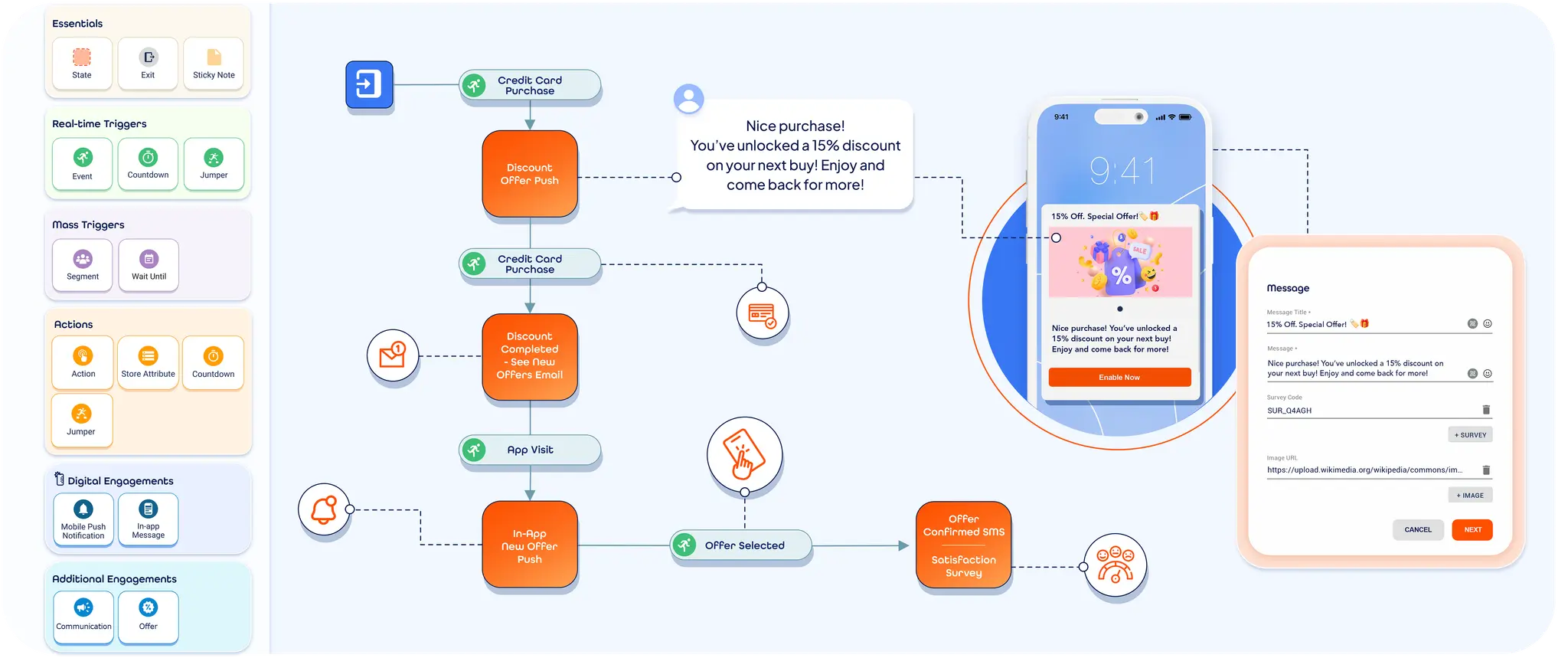
The Challenge: Fragmented Journeys & Mobile Disconnection
While mobile apps play a critical role in how customers interact with brands, they’re often treated as a standalone channel rather than a connected part of the larger customer journey. This siloed approach can lead to disjointed experiences where a user’s in-app behavior isn’t reflected in the messages they receive on other channels, like email, SMS, or the web.
The root of the issue often lies in outdated tech stacks, channel-specific teams, or lack of real-time data synchronization. Without a unified view of the customer and smart orchestration across touchpoints, brands risk delivering inconsistent messaging that feels impersonal, or worse, annoying.
The Pillars of a Mobile-First Omnichannel Experience
Creating a seamless omnichannel experience for mobile app users isn’t just about being present on multiple channels, it’s about connecting those touchpoints intelligently and in real time.
Here are the four key pillars that make that possible:
1. Unified Customer Profile
A connected experience starts with a single, unified view of the user. This means consolidating data from all marketing channels into one real-time profile that updates based on customer engagement. With AI and real-time customer data, brands can understand individual behaviors and preferences as they happen. This enables precise targeting, dynamic segmentation, and timely responses that feel personal and relevant.
2. Channel Coordination
It’s not enough to push messages across every channel; they need to work together to create consistent experiences. Effective omnichannel customer orchestration ensures that each message, whether it’s an in-app message, SMS, or email, is context-aware and aligned with the user’s current stage in the journey. AI-powered journey orchestration tools can determine the best timing, channel, and content for each interaction.
3. Personalization Across Every Touchpoint
True personalization goes beyond inserting a name into a message. It’s about delivering experiences that reflect the user’s real-time intent, preferences, and past behavior. With dynamic content and behavioral triggers, brands can tailor everything from product recommendations to message tone and timing. Embracing real-time personalization for mobile apps results in a cohesive and seamless customer journey that feels like it was designed for that individual user.
4. Continuous Optimization
The most successful omnichannel brands rely on continuous testing, AI-driven insights, and feedback loops to optimize every aspect of the customer experience. From A/B testing content to analyzing multichannel engagement patterns, these insights help brands fine-tune timing, creative, and channel mix for maximum impact while avoiding fatigue or drop-off.
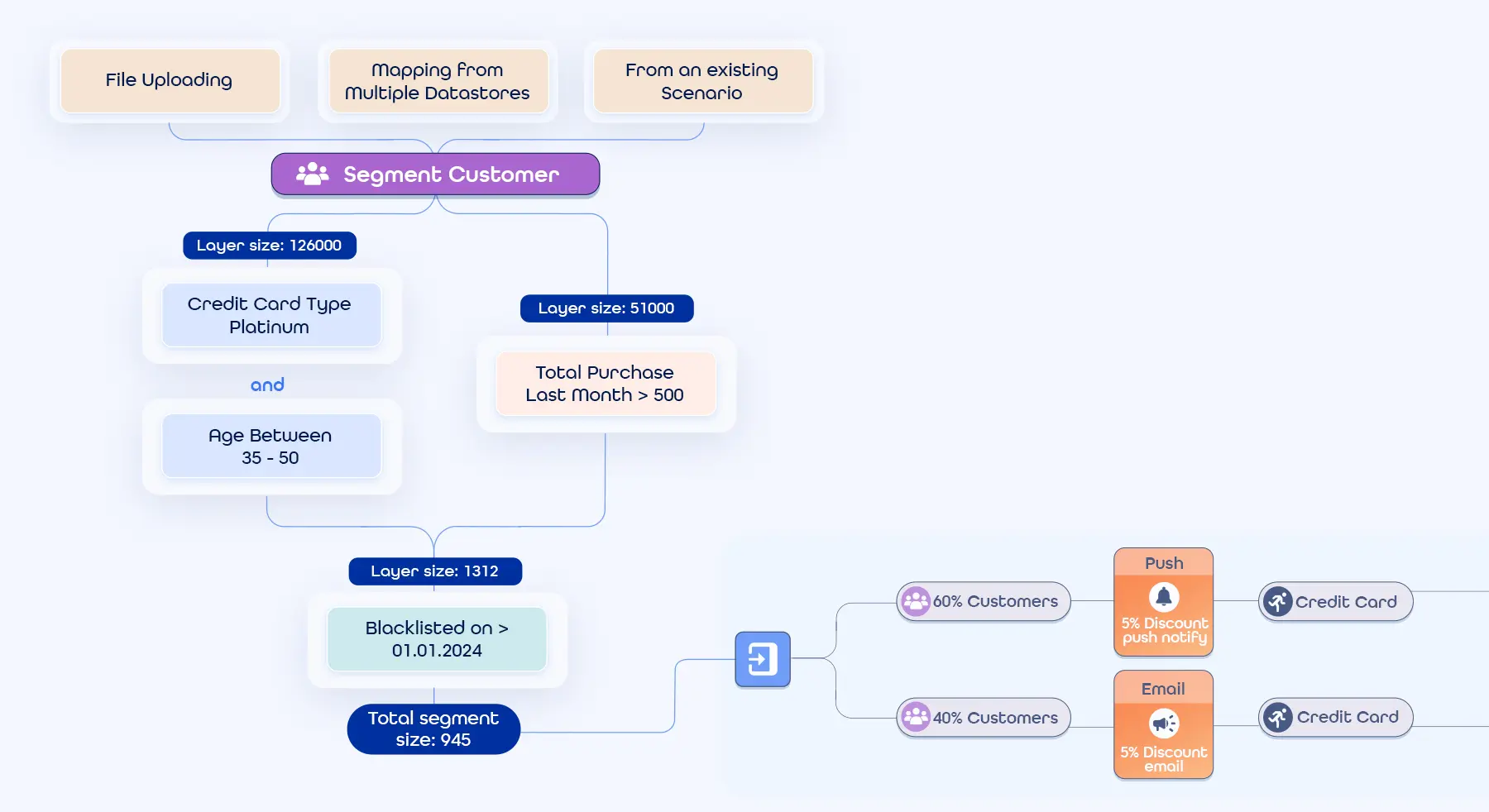
Tech Stack Essentials for Mobile Omnichannel Experiences
A successful cross-channel marketing strategy demands the right technology foundation. Without a connected, real-time martech stack, even the best intentions fall flat.
Here are the key components brands need to bring omnichannel personalization to life on mobile:
1. Real-Time Customer Data Platform (CDP)
A CDP acts as the central brain of a brand’s customer experience strategy. It unifies data from all touchpoints, such as social media, website, customer service, and live chat, and updates user profiles in real time. This enables dynamic audience building, event-based triggers, and AI-driven segmentation that reflects users' latest behaviors to provide a personalized experience.
2. Mobile Engagement Software Development Kits (SDK)
To deliver timely and personalized messages on mobile, brands need robust SDKs integrated into their app. These power push notifications, in-app messages, product modals, and other key interactions while also collecting behavioral data to feed the CDP and orchestration engine.
3. Journey Orchestration Engine
A customer journey orchestration tool uses real-time data and business logic to determine what message to send, when, and through which channel. It ensures that messaging across mobile, email, SMS, and web is cohesive and tailored to customer expectations and context.
4. AI & Machine Learning Capabilities
AI adds the intelligence needed to scale personalization and optimization. From leveraging predictive analytics for personalized recommendations to churn modeling for improving pain points, machine learning helps refine experiences continuously without relying on manual guesswork.
5. Open Application Programming Interface (API) & Ecosystem Integrations
Whether a brand is syncing with its CRM, analytics platform, customer support tools, or commerce systems, open APIs and prebuilt integrations ensure its tech stack can speak fluently across systems and teams.
6. Privacy & Consent Management Tools
With growing privacy expectations and evolving regulations like GDPR and CCPA, a brand’s stack must support consent tracking, preference management, and data governance. This is especially important regarding mobile app user engagement, where permissions are tightly controlled.
Common Pitfalls in Delivering Mobile Omnichannel Experiences
Even with the right tools and strategy, creating a truly seamless omnichannel experience for mobile users isn’t without its pitfalls.
Here are some of the most common challenges brands face and why they matter:
1. Siloed Teams
Mobile, email, web, and product teams often operate independently, with their own KPIs, tools, and timelines. Without shared ownership of the customer journey, it’s easy to deliver fragmented experiences that confuse or frustrate users. Alignment across teams is essential, but not always easy.
2. Outdated Data = Missed Moments
If a brand's systems can’t process data in real time, its messaging will always lag behind user behavior. Delays in syncing events from the mobile app, such as purchases, browsing activity, and app uninstalls can lead to irrelevant or poorly timed outreach, hurting both engagement and long term loyalty.
3. Notification Fatigue
When multiple teams manage different channels without coordination, users often get hit with overlapping or excessive messaging. This can lead to notification fatigue, app uninstalls, or email opt-outs. Orchestration isn’t just about sending more; it’s about sending smarter.
4. Technical Integration Hurdles
Connecting a mobile app to the rest of a martech stack isn’t always plug-and-play. SDK implementation, API limitations, and event instrumentation can slow down deployment and require ongoing developer support. Without flexible architecture, scaling becomes a challenge.
5. Privacy Constraints
Mobile platforms like iOS and Android place strict controls on data access, tracking, and push permissions. Combine that with regulatory requirements and it becomes critical to manage consent transparently and respect user preferences across all touchpoints.
These challenges aren’t insurmountable, but they do require strategic planning, organizational alignment, and the right mix of technology and expertise to overcome.
evamX: Powering Seamless Mobile Journeys at Scale
Creating a connected, personalized, and real-time experience for mobile app users doesn’t have to be complex when you have the right platform powering your strategy.
evamX is an AI-powered marketing platform designed to help teams overcome the most common barriers to omnichannel success. With real-time data ingestion, dynamic segmentation, and machine learning capabilities, evamX empowers businesses to deliver relevant and timely messages across mobile, web, email, SMS, and more, all from one place.
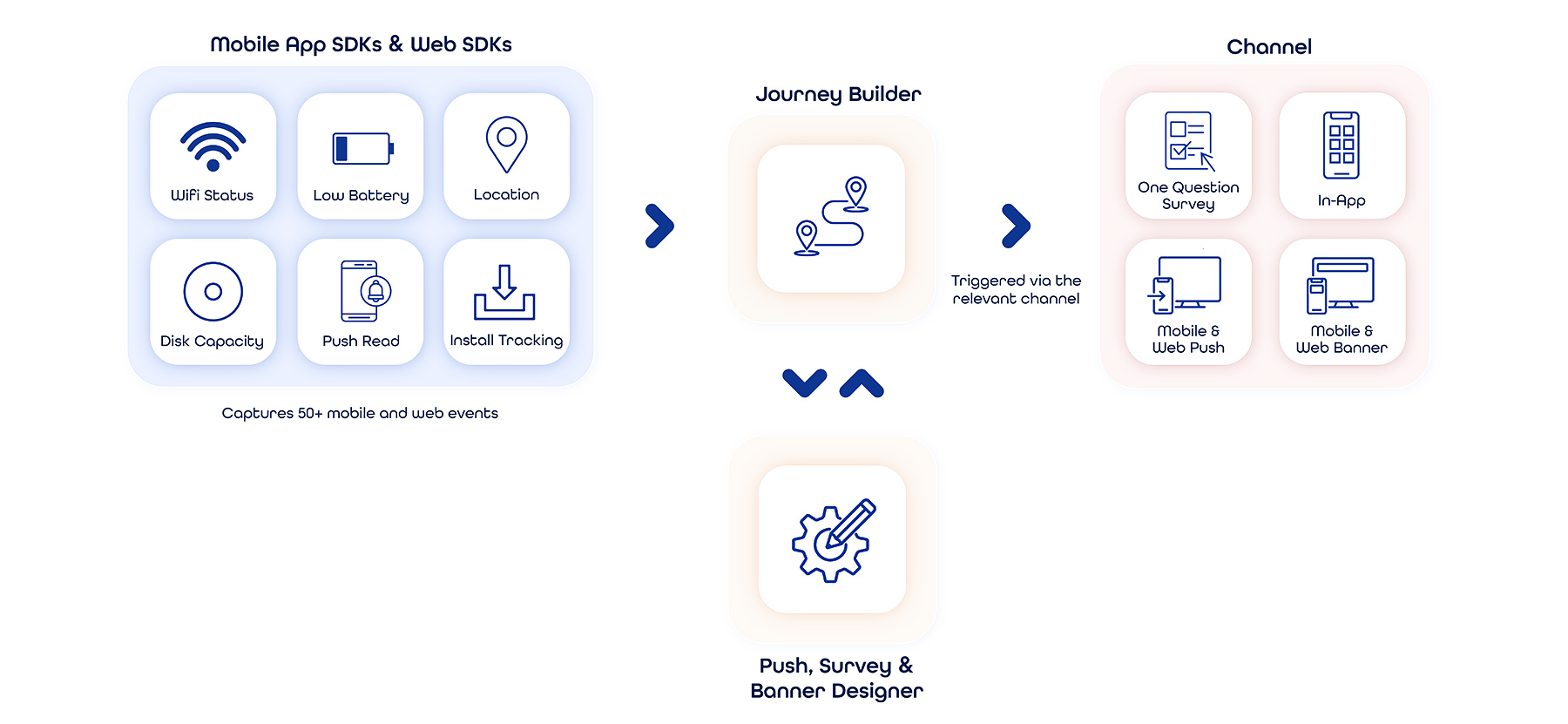
With evamX, you can:
Create and launch campaigns without relying on IT teams
Automate customer journeys with real-time triggers and decisioning
Personalize every message based on live behavior, preferences, and intent
Continuously optimize journeys with built-in testing and AI-driven insights
Unify cross-channel engagement with a single, 360° view of the customer
Easily manage consent, preferences, and compliance at scale
Ready to see evamX in action? Request a demo or contact us to learn how we can help you unlock real-time, mobile-first omnichannel marketing that drives results.





